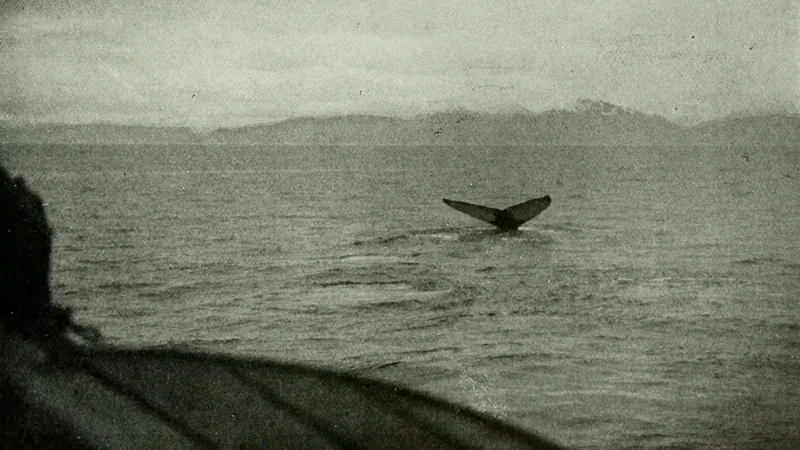
Revealed: How Whaling Records Are Transforming Our Understanding of Sea Ice
2025-07-15
Author: Wei Ling
Whaling Records: A Grim Legacy with a Silver Lining
Historically, industrial whaling was a brutal operation aimed at maximizing profits, leaving behind a detailed trail of records created by whalers to track their catches. These documents, dating back over a century, are proving to be invaluable to scientists grappling with climate questions, particularly regarding historical sea ice levels in the Southern Ocean.
New Insights from the Past
A groundbreaking study published in Environmental Research: Climate this year reveals a striking revelation: modern climate models may significantly overestimate the historical extent of sea ice surrounding Antarctica. A dedicated team of scientists, including cetologists and oceanographers, tapped into these whaling logs to gain fresh insights.
The Whales’ Role in Climate Science
Focusing on data from humpback whale expeditions, which typically roam near the ice edge during summer, the researchers leveraged these whales' behavior as a proxy for sea ice extent. As humpback whales feed on krill that thrive beneath retreating ice, their catch locations serve as a crucial indicator of where sea ice might have reached in the past.
Oceanographer Marcello Vichi from the University of Cape Town expressed a paradoxical sentiment: “We decimated them; now, they’re helping us to do a better job for our future projections.” His findings reveal how historical exploitation is now aiding in climate modeling.
Why Sea Ice Matters
Understanding sea ice extent is vital since ice reflects sunlight, impacting global temperatures and climate patterns. Marilyn Raphael, a physical geographer at UCLA, emphasizes that changes in sea ice affect larger temperature gradients and consequently influence wind patterns and climate. Accurate historical data is thus key to predicting future climate scenarios.
Diving Deep into the Data
Vichi and his team analyzed a wealth of data from the International Whaling Commission, documenting over 215,000 humpback catches from the early to mid-20th century. Their key focus was the 1930s, a time of high whaling activity when vast numbers of humpbacks were recorded each month during the Antarctic summer.
Their analysis revealed that contemporary models consistently overestimate historical sea ice extent by an average of 4° latitude, with some estimates going as high as 10°.
Unraveling the Discrepancies
While the study exposes significant discrepancies in sea ice predictions, the scientists remain puzzled about the underlying causes. One hypothesis suggests that shifts in the way ice forms in the Southern Ocean may have begun around the 1960s, adding complexity to the ongoing climate conversation.
With fewer than 50 years of satellite data, our understanding of these systems is limited, making the historical catch data an essential resource for accurately representing climate trends.
Towards a Deeper Understanding of Climate Change
Both Vichi and Raphael acknowledge the limitations of relying on indirect data, yet they agree on the importance of employing every available resource to enhance our understanding of climate dynamics. Ryan Fogt, a climatologist, stresses the value of examining historical data despite their imperfections, as they provide crucial insights into patterns we are just beginning to unravel.
This innovative use of whaling records marks a pivotal shift in climate science—transforming grim historical practices into powerful tools for understanding and combating climate change.


 Brasil (PT)
Brasil (PT)
 Canada (EN)
Canada (EN)
 Chile (ES)
Chile (ES)
 Česko (CS)
Česko (CS)
 대한민국 (KO)
대한민국 (KO)
 España (ES)
España (ES)
 France (FR)
France (FR)
 Hong Kong (EN)
Hong Kong (EN)
 Italia (IT)
Italia (IT)
 日本 (JA)
日本 (JA)
 Magyarország (HU)
Magyarország (HU)
 Norge (NO)
Norge (NO)
 Polska (PL)
Polska (PL)
 Schweiz (DE)
Schweiz (DE)
 Singapore (EN)
Singapore (EN)
 Sverige (SV)
Sverige (SV)
 Suomi (FI)
Suomi (FI)
 Türkiye (TR)
Türkiye (TR)
 الإمارات العربية المتحدة (AR)
الإمارات العربية المتحدة (AR)